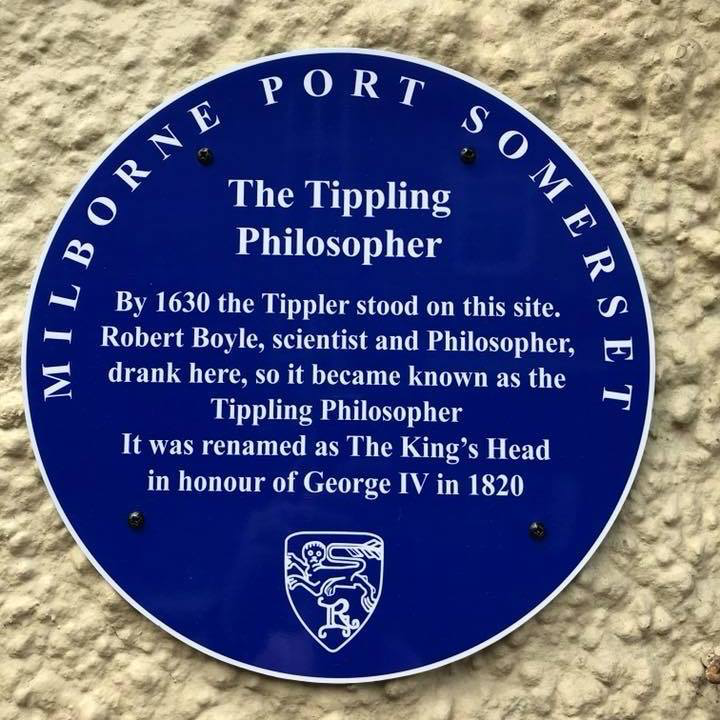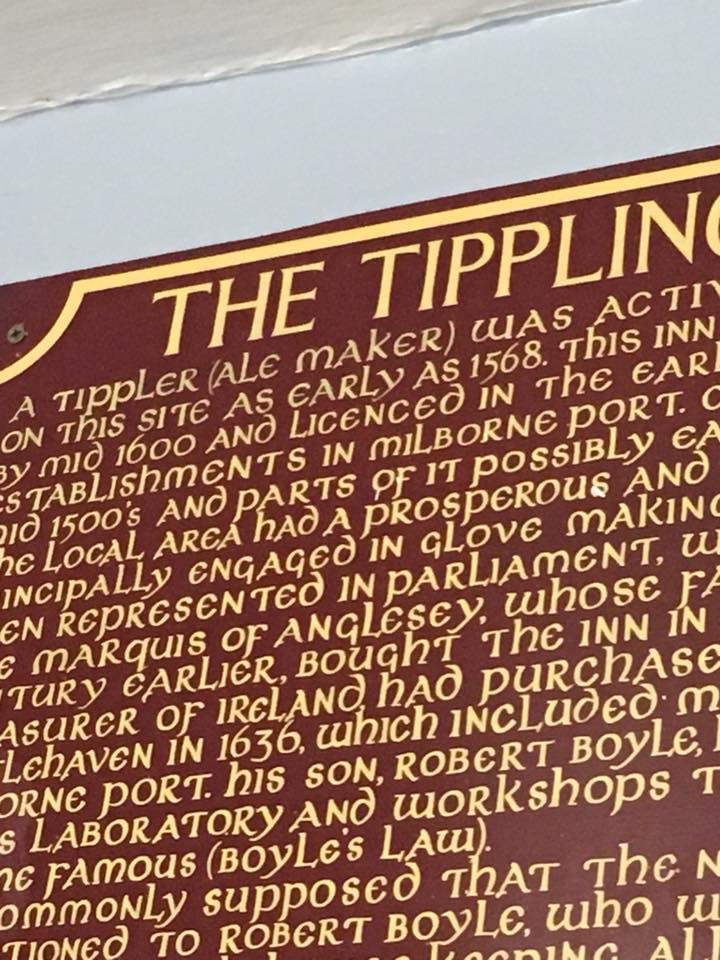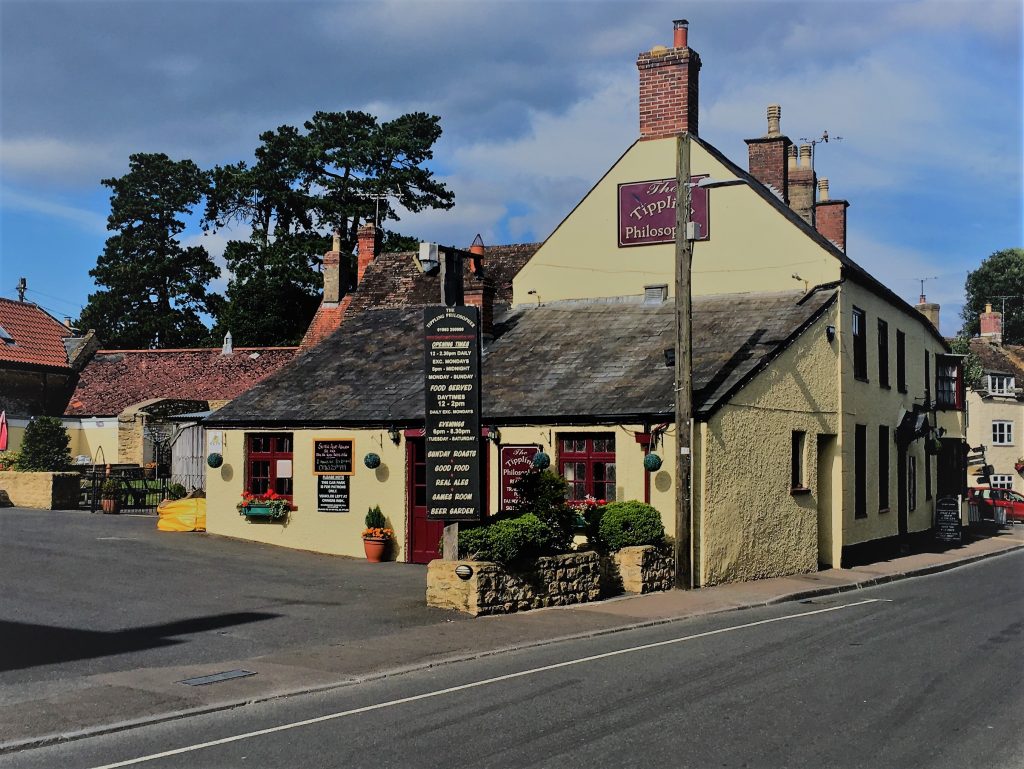The text below is a direct copy of the hand painted board in the main bar of the Tippling Philosopher. Commissioned in the 1990’s for the pub, written by local historian Fred Pierce, who sadly passed away some years ago.
A tippler (ale maker) was active in the centre of the village, possibly on this site as early as 1568 this inn was already established as an alehouse by the mid-1600 and licensed in the early 1700’s along with seven other similar establishments in Milborne Port certainly the building dates back to the mid 1500’s and parts of it possibly earlier
The local area had a prosperous and industrious residential nuclease principally, engaged in glove making and leather dressing and the village was even presented in the houses of parliament with two seats.
The Marques of Anglesey, whose family had moved to the area nearly a century earlier, bought the inn in 1797. Richard Boyle, 1st earl of Cork, lord treasurer of Ireland, had purchased Stalbridge Park from the earl of Castlehaven in 1636 which included most of today’s Stalbridge and parts of Milborne Port, his son Robert Boyle lived there from 1644 onwards and set up his laboratory and workshops to continue his studies for which he had become famous (Boyle’s Law).
It is commonly supposed that the name ‘Tippling Philosopher’ may be apportioned to Robert Boyle, who was famous for holding court of an evening in the alehouse, keeping all amused with his anecdotes and amateur philosophising.
Fortunes changed and the area suffered badly when Charles I and his army enjoyed its hospitality in 1644. In fact, Robert only saved his property from sequestering in 1645 because his sister had connections with the Presbyterian party in parliament. Boyle moved thereafter to Oxford and lent the park to his brother, although he was still named the lord of manor of Stalbridge upon his death in 1691. The name was changed to the Kings’ Head to celebrate the visit of George III in 1804 to Stalbridge Park.
The pub featured heavily in the later history of the area being the centre of the village, with local landowners fighting for control of the two parliamentary seats and a system rife with corruption and bribes. The pub was well placed for heavy entertaining and free liberation that was pre-cursor to the elections and winning celebrations that followed. Altogether the house featured in 17 petitions in parliament against Milborne Port MPs for bribery and corruption. In 1832 the reform bill became law and the village lost its two members despite falsifying the census by 700.
At about this time, the inn was still called “The Tipplers” in some circles; it was used to hold local inquests and other legal functions. Judge Jefferys was known to have used the dining room on several occasions whilst deliberating on the future of those convicted in his famous assizes. Several villains paid the ultimate penalty for their sins in front of the pub and crowds that gathered to see the criminals off, then partook of copious ale and fayre. Up until the Second World War, the Blackmore vale hunt was so popular with army officers that the stables of the inn would be taken for the whole season, whilst the rooms above the stables would be used to house the batmen and stable lads. The same stables that were originally built or modified, using stones and roofing materials from the demolished Stalbridge Park House 1823, continued to provide use until 1927, which the modern skittle alley and function room were built.


